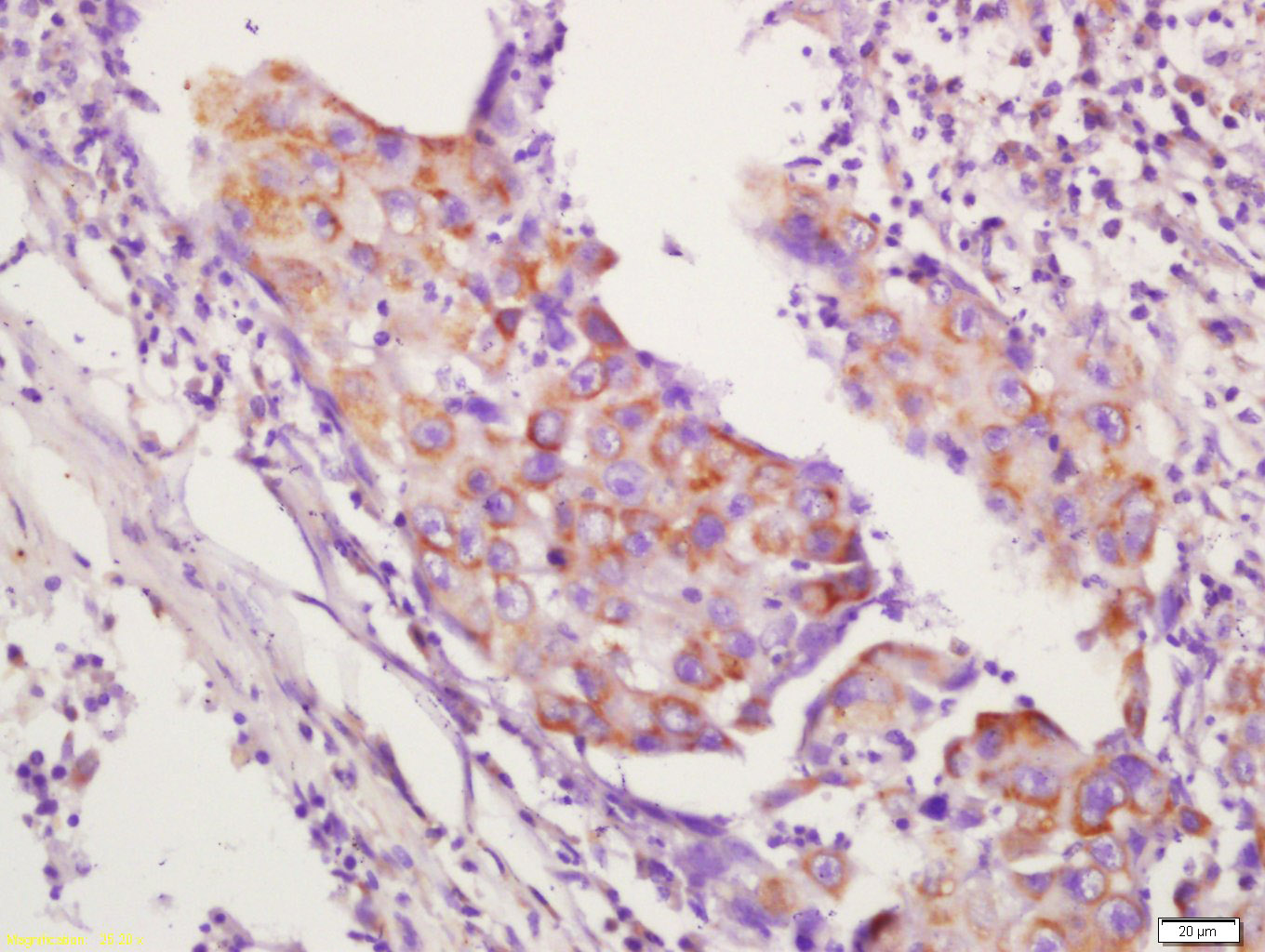Rabbit anti-CD134 Polyclonal Antibody别名宿主特异性反应种属预测反应种属应用分子量免疫原浓度纯化方法类型同种型储存/保存方法存储溶液使用方法背景说明细胞定位UniProt
| 概述 | |
| 别名 |
CD134抗体;Tumor necrosis factor receptor superfamily member 4; ACT 35; ACT35; ACT35 antigen; CD 134; CD134 antigen; Lymphoid activation antigene ACT35; OX 40; OX40; OX40 antigen; OX40 cell surface antigen; OX40 homologue; OX40L receptor; TAX transcriptionally activated glycoprotein 1 receptor; TNFRSF 4; TNFRSF4
|
| 宿主 |
Rabbit
|
| 特异性 |
CD134
|
| 反应种属 |
Human, Mouse, Rat
|
| 预测反应种属 |
Dog;Cow;Horse;
|
| 应用 |
IHC-P=1:100-500
|
| 分子量 |
Predicted molecular weight: 27kDa
|
| 免疫原 |
KLH conjugated synthetic peptide derived from human TNFRSF4 (101-160aa):101-200/277
|
| 性能 | |
| 浓度 |
1mg/ml
|
| 纯化方法 |
affinity purified by Protein A
|
| 类型 |
Polyclonal Antibody
|
| 同种型 |
IgG
|
| 储存/保存方法 |
Store at -20 °C for one year. Avoid repeated freeze/thaw cycles.
|
| 存储溶液 |
0.01M TBS(pH7.4) with 1% BSA, 0.03% Proclin300 and 50% Glycerol.
|
| 使用方法 |
WB=1:500-2000 ELISA=1:500-1000 IHC-P=1:400-800 IHC-F=1:400-800 ICC=1:100-500 IF=1:100-500
not yet tested in other applications. optimal dilutions/concentrations should be determined by the end user. |
| 靶标 | |
| 背景说明 |
The protein encoded by this gene is a member of the TNF-receptor superfamily. This receptor has been shown to activate NF-kappaB through its interaction with adaptor proteins TRAF2 and TRAF5. Knockout studies in mice suggested that this receptor promotes the expression of apoptosis inhibitors BCL2 and BCL2lL1/BCL2-XL, and thus suppresses apoptosis. The knockout studies also suggested the roles of this receptor in CD4+ T cell response, as well as in T cell-dependent B cell proliferation and differentiation. [provided by RefSeq, Jul 2008].
|
| 细胞定位 |
细胞膜
|
| UniProt |
P43489
|
实验结果图

Tissue/cell: human lung carcinoma; 4% Paraformaldehyde-fixed and paraffin-embedded;
Antigen retrieval: citrate buffer, Boiling bathing for 15min; Block endogenous peroxidase by 3% Hydrogen peroxide for 30min; Blocking buffer at 37℃ for 20 min;
Incubation: Anti-CD134 Polyclonal Antibody, Unconjugated secondary primary antibody 1:200, overnight at 4°C, followed by conjugation to the secondary antibody and DAB staining
